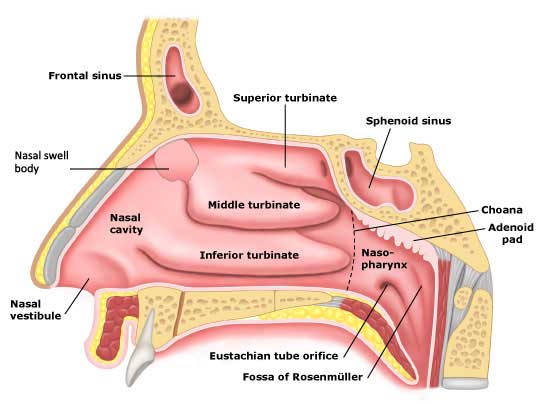Swell Body Destruction
Chronic Rhinitis is characterized by inflammation of the nasal passageways. Most often this results in a significant degree of nasal congestion/obstruction.
The nasal swell body is a fusiform structure (spindly in shape where its widest part is in the middle and narrowest ends are at the head and tail) located in the wider area of the nasal septum which is located above the inferior turbinates and toward the front of the middle turbinates. It is considered to be physiologically similar to the inferior turbinate.

A nasal swell body can affect airflow through both the external and internal nasal valves, and its size seems dependent on gravity, meaning that a patient’s head position can actually affect its size.
A nasal swell body contributes to nasal congestion via an increased density of venous sinusoids which can promote congestion via the same mechanism as in inferior turbinates via blood flow. This structure may respond to medical treatment reserved for chronic rhinitis – decongestants, steroid sprays, antihistamines, saline sprays.
When medical treatment is not effective, swell body destruction can provide improvement in symptoms of nasal obstruction/congestion due to nasal swell body enlargement.
Swell body destruction can reduce the symptoms of nasal congestion by effectively decreasing the size of the enlarged swell body.
Swell body destruction is an office procedure performed under local anesthesia through the nose, therefore, the patient does not have any visible incisions or bruising.
The recovery time after a swell body destruction is short. Patients can expect some nasal congestion due to swelling. After 1-2 weeks, patients return to the office for their post-operative visit. No packing is used during this procedure.
If you would like to learn more about swell body destruction, feel free to contact us for further assessment and treatment.
